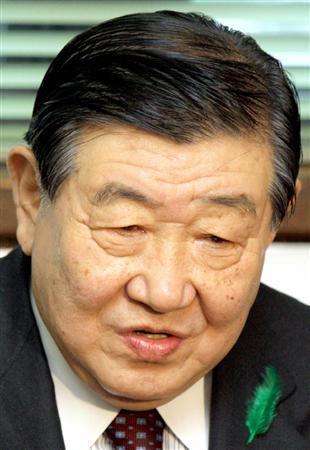In the autumn of last year, Shizuka Kamei pushed through a debt moratorium law, primarily with the provincial goal of backing the small real estate companies in his home town of Hiroshima that were hit hard by the recession. At the time, I called this woefully short-sighted:
Small companies across Japan’s countryside that are having trouble making repayments should either restructure themselves, or fail and be restructured by creditors or new management. Many have antiquated management with regards to accounting, employment rosters, operational efficiency, supply chains, etc. Companies that can’t adapt to changed economic environments are supposed to fail. Yes, some good companies caught in unlucky times are destined to be caught in the current credit crunch as they are unable to repay loans and go bankrupt. But bankruptcy is a good thing! It is the engine of economic development that allows bad companies to fail, stifled talent to move elsewhere, assets to be sold at whatever price the market will bear, and bad management to be replaced. Yes, it sucks that people lose jobs and shareholders forfeit their investments, but that’s life! Letting this happen is a necessity for economic growth.
And on top of this, the poor local banks, only barely functioning after 15 years of treading water with the bad loan crisis, will now inevitably reduce their limited lending activities to nothing. There will be no money to lend, thus no local business growth or economic development, and thus no entrepreneurial activity. A short-term benefit for stabilized employment rates means the countryside gets screwed in the long term.
While my concern about small businesses refusing to restructure remained true, my concern for local banks was addressed when the final bill was passed (which you can read in Japanese here). The Japanese government — in other words, tax dollars — provide a statutory guarantee for these deadbeats. The mechanics of this are, under Article 11 of the Moratorium Law, that the government provides sufficient financial backing to the Credit Guarantee Union, which backs the financial institution undertaking the new obligation to support the small business. The Credit Guarantee Union is a government-backed public interest corporation that provides credit and loans to small businesses.
How many people and “small businesses” (defined as a company with less than US$3 million in capital and less than 300 employees) have applied for the moratorium in the last half year? About half a million:
Japanese banks have received a total of 521,030 applications for the easing of loan repayment terms from small and midsize companies and homeowners under the so-called debt moratorium law, the Financial Services Agency said Friday.
The applications, as of the end of March, since the law took effect in December last year involved 13.64 trillion yen and more than 90 percent of them were approved, the FSA said.
Congratulations, Japanese taxpayer — your tax yen are now financing these deadbeats. When the world is buzzing that Japan could be the next Greece, and could be sparked by one of any number of events (a failed Japanese bond auction, a sharp drop in tax revenue, a failure to implement tough fiscal and budgetary standards, a sharp contraction in Japanese GDP, a downgrade in sovereign debt by the ratings agencies), this is one of the worst policies that could be put in place.




